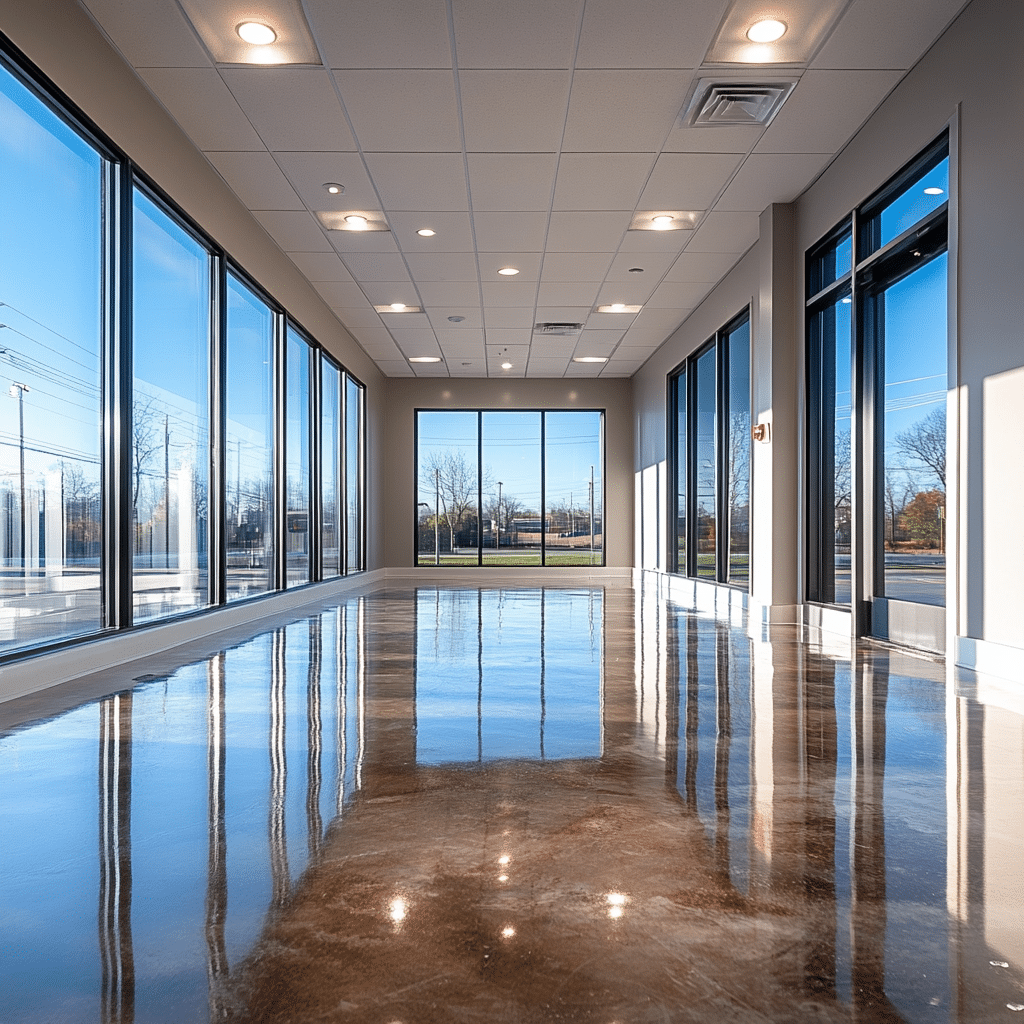Comprehensive Insights into Commercial Real Estate Rental Trends
2023 was a landmark year for the commercial real estate rental market globally. As businesses adapted to the post-pandemic environment, they displayed remarkable resilience, leading to innovative commercial housing solutions and adaptive leasing strategies. This article takes a deep dive into the transformative approaches adopted last year and how they shape the industry’s future.

Innovative Commercial Housing Approaches
Co-working and Flexible Workspaces
The rise of remote work during the pandemic spurred the popularity of flexible office solutions. Co-working giants like WeWork and Spaces led the way by offering adaptable leases suited to fluctuating team sizes and hybrid work models. Companies that previously ignored these flexible formats now see them as vital to maintaining productivity and cutting overhead.
Sustainable and Green Buildings
Sustainability has become a cornerstone in commercial housing. Companies such as Google’s Silicon Valley campus and Apple’s Cupertino headquarters are prime examples of integrating green energy solutions and eco-friendly designs. In 2023, commercial real estate owners invested heavily in LEED certification and green building materials, enhancing their appeal to environmentally conscious businesses.

| Category | Details |
| Types of Commercial Properties | – Office Spaces – Retail Spaces – Industrial Properties – Multifamily Units – Special Purpose Spaces |
| Key Features | – Location – Square Footage – Amenities (Parking, Security, HVAC) – Accessibility (Proximity to public transport) – Lease Terms & Conditions |
| Typical Rental Costs | – Office Spaces: $20-$60 per sq ft/year – Retail Spaces: $20-$50 per sq ft/year – Industrial Properties: $5-$15 per sq ft/year – Multifamily Units: Varies widely by region – Special Purpose Spaces: Custom pricing based on use and amenities |
| Lease Types | – Full-Service Gross Lease – Modified Gross Lease – Net Lease (Single, Double, Triple Net) – Percentage Lease |
| Common Lease Terms | – 3 to 10 years average duration – Option to renew – Rent escalation clauses (annual or CPI-based) – Maintenance and repair responsibilities |
| Benefits | – Fosters business growth with professional environments – Tax deductions (rent, utilities, property insurance) – Predictable expenditure with fixed rents – Scalability with flexible lease terms – Location can enhance brand image |
| Challenges | – High upfront costs (deposits, fit-out costs) – Long-term financial commitment – Potential for market fluctuation impact – Maintenance responsibilities (depending on lease type) – Requires thorough understanding of lease agreements |
| Market Trends | – Increased demand in urban areas – Growth of co-working spaces – Technology integration (smart buildings) – Shift towards eco-friendly and sustainable buildings – Adaptation of spaces for hybrid working models |
| Key Considerations for Tenants | – Assessing the right location for target audience – Understanding total cost of occupancy (rent, utilities, maintenance) – Future growth and space requirements – Negotiating lease terms to balance flexibility and stability – Legal due diligence to understand all terms and obligations |
Maximizing Returns from Commercial Real Estate Rental
Demand-Driven Leasing Models
The past year saw a shift to demand-driven leasing strategies. Property management companies like CBRE began using data analytics to predict demand patterns and tailor lease terms accordingly. By leveraging advanced algorithms and big data, landlords could optimize occupancy rates and adjust rental prices dynamically, making their properties more appealing and profitable.
Incorporating Technology in Tenant Management
The integration of technology transformed commercial real estate rental in 2023. Apps like Building Engines enabled property managers to streamline tenant requests, maintenance schedules, and lease management through a centralized digital platform. This technological shift improved tenant satisfaction and boosted operational efficiency.
Strategies for Finding the Best Commercial Rental Near Me
Leveraging Real Estate Platforms
Digital real estate platforms such as Zillow and LoopNet became indispensable tools for finding the best commercial rental spaces. These platforms offered detailed property analytics, virtual tours, and AI-driven recommendations, making the search for “commercial rental near me” more intuitive and efficient than ever.
Utilizing Local Real Estate Agents
Despite technological advancements, local real estate agents remained crucial in 2023. Their insider knowledge of local markets and personal connections often proved invaluable. Agents from firms like Cushman & Wakefield and Colliers International provided nuanced insights into neighborhood trends and off-market opportunities that weren’t available online.
Trends in Office Real Estate: Merging Digital and Physical Spaces
Hybrid Work Models Shaping Office Spaces
The hybrid work model significantly influenced office real estate in 2023. Companies like Microsoft and Salesforce led the way in designing office spaces that supported both in-person and remote work. These spaces featured modular designs, collaborative zones, and state-of-the-art AV systems to facilitate seamless interaction between remote and on-site employees.
Health and Wellness Amenities
Post-pandemic, employee health and wellness became priorities, affecting office real estate design. Amenities like advanced HVAC systems, wellness rooms, and touchless technologies were in high demand. Corporate giants such as Google incorporated these features to ensure a safe and healthy workspace, thus attracting and retaining top talent.
Strategic Advice for 2024 and Beyond
Embrace Hybrid and Flexible Models
The commercial real estate rental landscape will continue to evolve, driven by the ongoing shift to hybrid work models. Landlords and businesses should invest in flexible spaces that can quickly adapt to changing needs. This strategy not only safeguards against market volatility but also attracts a broader tenant base.
Focus on Sustainability and Technology
Sustainability and technological integration are essential components of modern commercial housing and office real estate. Landlords should consider upgrading properties to meet environmental standards and incorporate smart technologies to enhance operational efficiency and tenant satisfaction.
Final Thoughts
The commercial real estate rental market in 2023 showcased significant adaptability and innovation. By embracing flexible workspaces, leveraging data-driven leasing models, and integrating sustainability, property owners and businesses can navigate the complexities of modern commercial real estate. As we move into 2024 and beyond, these strategies will be pivotal in shaping a resilient and dynamic rental market.
For instance, check out our offerings on Loans mortgage rates and Downpayment assistance. If you’re interested in broader investments, look into commercial property sales.
While you’re taking care of your business, don’t forget as well about engagement platforms—sometimes finding time to unwind with love Is an illusion can add a needed balance to hectic days. Knowing community resources is smart too, like the Salvation Army in Carson city, as it offers a commendable example of how organizations adapt. And hey, amid all these important tasks, remember to take an interest in pop culture—did you hear Did Selena gomez get a boob job?
Embrace these trends and strategies to stay ahead in the competitive world of commercial real estate rental as we head into 2024. The future is bright for those who adapt, innovate, and invest thoughtfully.
Commercial Real Estate Rental: Fun Trivia and Interesting Facts
Historical Tidbits
Let’s dive into some fascinating trivia about commercial real estate rental while unearthing some intriguing facts. Did you know the oldest skyscraper in the world is the Home Insurance Building in Chicago? Erected in 1885, it was a mere 10 stories tall but revolutionized urban architecture and became a blueprint for modern commercial spaces. Fast forward to today, and architects across the globe draw inspiration from the past to design contemporary office space marvels that suit diverse business needs.
Another fascinating snippet involves the history of commercial districts. Before New York was the commercial behemoth it is now, Philadelphia held that title due to its strategic location and booming trade during the 18th and early 19th centuries. These cities’ transformations are prime examples of how commercial hubs evolve over time, with rental strategies adapting accordingly.
Modern-Day Wonders
Shifting gears to more recent times, did you know that Tokyo boasts the world’s most expensive commercial real estate? The chic Ginza district is a hotbed for luxury brands and high-end retail, making space here some of the priciest real estate per square meter. This exemplifies the extreme demand and premium attached to prime commercial locations, emphasizing the importance of strategic leasing in bustling urban areas.
Interestingly, the advent of digital technology is shaking up traditional leasing models. Virtual tours have become a critical tool for brokers and tenants alike, offering a remote and immersive way to explore potential spaces. In fact, an informative article on virtual tours highlights how this tech innovation enhances efficiency and appeal. Consequently, tenant expectations around leasing experiences are evolving, fostering swift agreements and better tenant-landlord relationships.
Future Trends
So, what lies ahead in the landscape of commercial leasing? A quirky bit of trivia many might overlook is that by 2030, experts predict that 30% of corporate real estate portfolios will be flexible coworking spaces. This massive shift is driven by the burgeoning gig economy and evolving work preferences. With an uptick in demand for flexibility, landlords are innovating aggressively to attract and retain tenants seeking dynamic work environments.
Moreover, sustainability and green buildings are no longer fringe priorities. The pursuit of LEED certification is a compelling trend in commercial real estate rental strategies. Tenants today are almost as interested in eco-friendly features as they are in square footage, pushing landlords to install energy-efficient systems and designs. An insightful read highlights the economic and environmental benefits of these sustainable efforts, making it clear that green commercial spaces are here to stay.
By weaving these trivia points into the narrative of commercial real estate rental, we not only pique your interest but also provide a holistic view of its past, present, and future. Whether you’re a real estate aficionado or a curious reader, these tidbits offer a window into a fascinating, ever-shifting industry.




